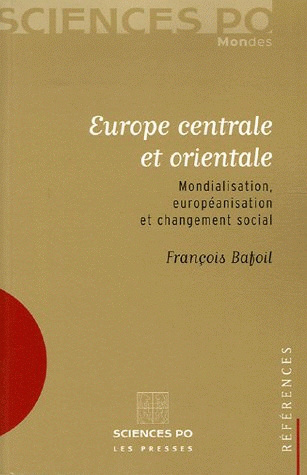Europe centrale et orientale
Mondialisation, européanisation et changement social
First Edition
The most complete analysis of 15 years of transition and Europeanization of Central and Eastern Europe. Read More
The collapse of communism in 1989 opened the way to the reunification of the European continent.
For the nations of Eastern Europe, the reassertion of their political, economic, and social independence played out in a context marked by two constraints: globalization and the rules of the European Union.
This work analyzes the transformations, between 1989 and 2006, of public policy and the political and economic sectors in these countries, proposing an approach in terms of strategy, conflict, alliances and resources. It shows how national traditions of sovereignty were combined with the economic and political liberalism of the 21st century in forming these new European states. Insisting on the intensity and swiftness of the dynamics behind the changes that have taken place since 1989, the book demonstrates, at the same time, the capacity of these new states to adopt global and European rules, as well as their determination to participate fully in the European concert.
Specifications
- Publisher
- Presses de Sciences Po
- Author
- François Bafoil,
- Collection
- Références
- Language
- French
- Tags
- central and eastern Europe
- Publisher Category
- > Europe > European Countries
- Publisher Category
- > Political Science > Governance
- Publisher Category
- > Fields > Governance
- Publisher Category
- > Europe
- Publisher Category
- > International field
- Publisher Category
- > Politics
- Publisher Category
- > Society
- BISAC Subject Heading
- POL000000 POLITICAL SCIENCE
- Onix Audience Codes
- 06 Professional and scholarly
- CLIL (Version 2013-2019)
- 3283 SCIENCES POLITIQUES
- Title First Published
- 05 October 2006
- Subject Scheme Identifier Code
- Thema subject category: Politics and government
Paperback
- Publication Date
- 05 October 2006
- ISBN-13
- 978-2-7246-1005-5
- Extent
- Main content page count : 568
- Code
- 978-2-7246-1005-5
- Weight
- 550 grams
- List Price
- 22.50 €
- ONIX XML
- Version 2.1, Version 3
ePub
- Publication Date
- 05 September 2006
- ISBN-13
- 9782724687996
- Product Content
- Text (eye-readable)
- Extent
- Main content page count : 568
- Code
- 9782724687996
- Technical Protection ebook
- Adobe DRM
- ONIX XML
- Version 2.1, Version 3
Google Book Preview
Contents

